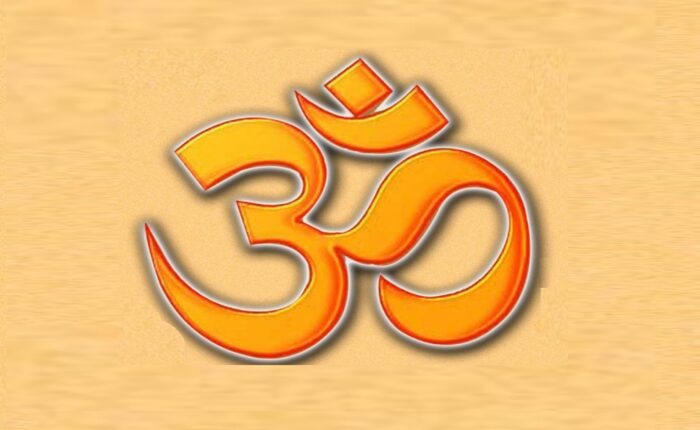Mundak Upanishad Proclaims Satyameva Jayate

We believe in God. We believe in Sat-Chit-Anand (Truth, Intellect and Bliss). Thus, we believe in Brahma (Paramatma) and try to link our soul with the super soul. Some say Vishnu is Brahma, some declare Shiva is Brahma, and Some say Mahadevi is Brahma. Some others say that the entire creation is Brahma. Some say Knowledge is Brahma. Even Aham Brahmasmi is equally true. However, we worship various Gods.
- We worship Ganapati as the destroyer of obstacles.
- We worship Ram on Ramanavami day.
- We worship Krishna on the Sri Krishna Janmashtami day.
- We worship Shiva on the Shivaratri day.
- We celebrate Navaratra for Durga Puja and Ramlila.
- We celebrate many more such days bowing to and revering to other deities.
Do we believe in polytheism? The concept of Brahma has been considered monotheistic. The concept of polytheism is about belief in many Gods. The question is debatable. However, we seem to belong to the special category known as Henotheism (Henotheism is a religious philosophy that places faith in one supreme deity while acknowledging the existence of multiple deities). We have not disassociated with the truth. The truth is adherence to Sat-Chit-Anand and we stand for it.
Mr. Somanath, the chairman of the Indian Space Research Organization (ISRO) went to Tirupati Balaji with his selected team of scientists to pay homage to the presiding deity and perhaps to seek the blessings of the God for success of his moon mission. The team consisted of experts in the science of aerodynamics and the science of rocketry. The lunar module (Chandrayan-3) landed on the south pole of the moon on 23.08.2023.
This incident illustrates the belief that we have in the concept of an all-pervasive and all-powerful God. The Mundak Upanishad explains this very belief very skillfully. The Upanishad belongs to Atharvaveda and is divided into three chapters known as Mundak-1, Mundak-2 and Mundak-3. Each Mundak has two sections. It is said that this Upanishad provides enough knowledge to turn anyone into a Mundit Sanyasi (Tonsured Renunciant) which may lead to salvation. The Upanishad speaks about truth.
It is better to follow the teachings of such Upanishads.
Tarko Apratishthah Shrutayo Vivinnah
Naiko Rishir Yasya Matam Pramanam
Dharmasya Tatvam Nihitam Guhyayam
Mahajano Yena Na Gatah Sa Panthah.
- Mahabharat, Vanaparva 313/117
(There is no scope for debate, shrutis (Vedas) have different messages. There are several Rishi and utterances of none could be held final regarding secrets of knowledge. Therefore, it is better to adopt the paths treaded by illustrious elders.)
The Mundak Upanishad speaks about types of knowledge, about Brahma, about the ways to reach Him and about the truth which prevails. The messages in the three sections are selectively explained below.
Tasmai Sa Hovacha Dve Vidye Veditavye Iti Ho Sma Yad Brahmavido Vadanti Para Chaivaapara Cha (1/1/4)
To him he said, two kinds of knowledge are to be known, as indeed, the knowers of the Brahma declare – the higher as well as the lower. In mantra 1/1/5 it has been made clear that Apara Vidya is the lower knowledge which may include all knowledge related to Vedas, Vedangas etc. We may also include in it all the modern sciences including artificial intelligence. All this constitutes the Apara Vidya. The Para Vidya is the higher knowledge which tells about Brahma. Mantra 1/1/6 gives details about Brahma.
That which is ungraspable, without family, without caste, without sight or hearing, without hands or feet, eternal, all-pervading, omnipresent, exceedingly subtle, that is undecaying which the wise perceive as the source of beings. Mantra 1/1/7 says that as the spider sends forth and draws in (its thread), so from the Imperishable arises here the universe.
Mundaka-2 teaches about utilizing AUM as a ladder for reaching up to Brahma. Mantra 2/2/3 says that taking as the bow a great weapon of the Upanishads, one should place in it the arrow sharpened by meditation for targeting the Brahma.
Pranavo Dhanuh Saro Hy Atma, Brahma Tat Laksyam Uchyate Appramattena Veddavyam Sarvat Tanmayo Bhavet.
The syllable AUM is the bow, one’s self indeed is the arrow, and Brahma is spoken of as the target of that. It is to be hit without making a mistake. Thus, one becomes united with it as the arrow (becomes one with the target).
Mundak 3 teaches about the glory of truth. Mantra 3/1/6 says.
Satyam Eva Jayate Nanrtam, Satyen Pantha Vitato Dev Yanah Yenakramanty Rsayo Hy Apta-Kama Yatratal Satyasya Paramam Nidhanam
Truth alone conquers, not untruth. By truth is laid out the path leading to the gods, by which the sages who have their desires fulfilled travel to where is that supreme abode of truth.
The motto of our country at present – Satyameva Jayate, belongs to this particular mantra from Mundak-3 of the Mundak Upanishad.
I am a Vedic astrologer by profession. I have done Jyotish Acharya from Bhartiya Vidya Bhawan. I am devoted to my Sadguru Shri Sai Nath of Shirdi. I am also interested in spirituality. I love to guide people.